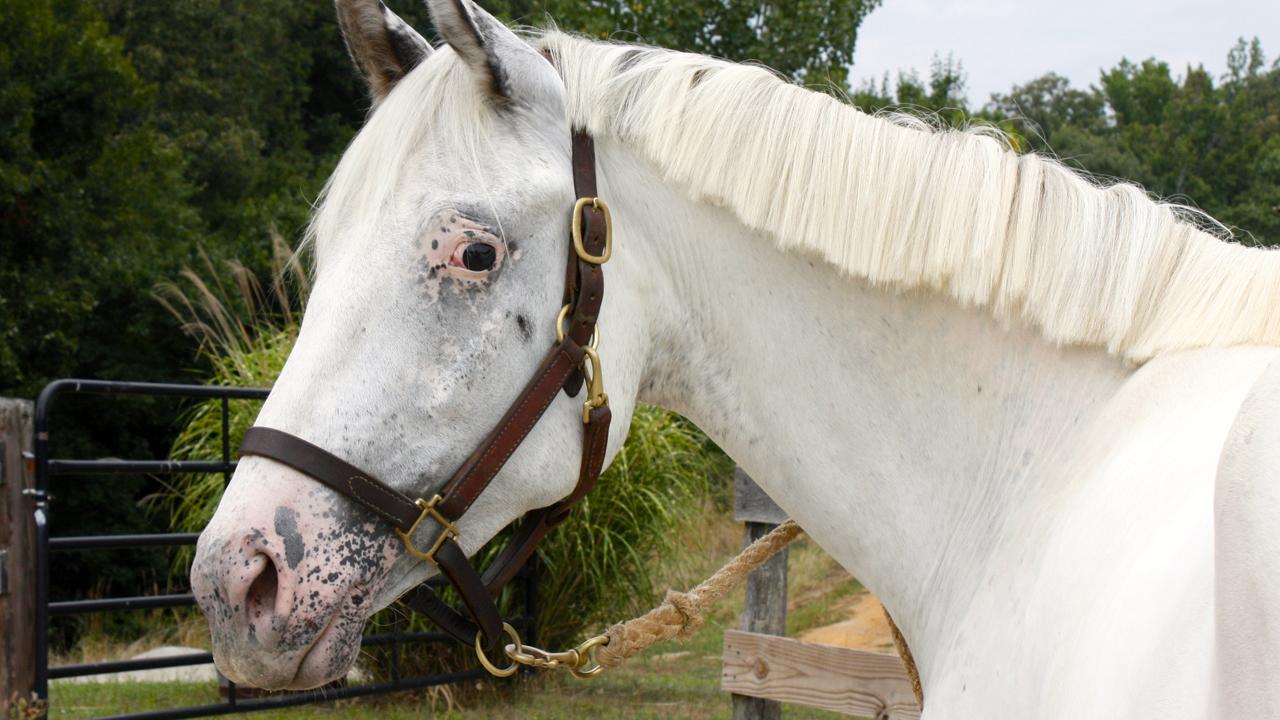
Leopard Complex (LP) Linked to Increased Risk for Equine Recurrent Uveitis
"ERU is one of the most devastating ocular diseases in Equine medicine. This interdisciplinary research is a valuable contribution to the many avenues of investigation needed to reduce the impact of the disease. Identification of the genetic risk factors should help to decrease the prevalence of ERU in the future."
- Dr. Lynne Sandmeyer, University of Saskatchewan
Background: Equine recurrent uveitis (ERU) is a common disease of the equine eye and a leading cause of blindness in horses. ERU is characterized by ocular inflammation in the middle layer or the uveal tract of the eye. This disease has historically been characterized by recurrent episodes of inflammation (termed classic or posterior ERU depending on location of inflammation within the eye). Some horses get a slightly different clinical presentation of this disease that has been termed insidious, which is defined by constant low levels of inflammation. The chronic inflammation causes damage to ocular tissue and can ultimately lead to blindness in affected horses.
Previous reports have suggested that Appaloosas are several times more likely to develop insidious ERU than horses of other breeds and are more likely to experience severe uveitis resulting in blindness. For example, Dwyer et al. (1995) found that Appaloosas were approximately eight times more likely to develop insidious ERU and approximately four times more likely to go blind than any other breed they investigated. A recent retrospective study of horses diagnosed with ERU at the Western College of Veterinary Medicine found that Appaloosas represented 62.5% of all ERU diagnoses at the hospital. These correlations between disease prevalence and breed suggest that genetics play a role in ERU risk.
The research: Two recent studies(1,2) by Veterinary Genetics Laboratory researchers and collaborators (including Dr. Lynne Sandmeyer from the University of Saskatchewan) investigated ERU risk factors and genetic loci of interest in Appaloosas, including leopard complex (LP) and Appaloosa pattern-1 (PATN1).
The results:
Study 1, Rockwell et al. (2020)
A logistic regression analysis of data from 98 Appaloosa horses suggested that LP has an additive effect on ERU risk, meaning that risk for ERU can be explained as LP/LP > N/LP > N/N. This study also provided evidence that PATN1 genotyping may also be helpful in predicting ERU risk. In other words, those horses homozygous for LP and PATN1 appeared to be at greater risk. More work is needed to confirm this finding and investigate if the LP mutation itself or a linked gene is the causal risk factor. Further, this study also determined that risk for ERU is complex, likely involving both genetic and environmental risk factors. Additional research at the VGL is ongoing to identify other genetic risk factors. The genetic investigation of ERU in multiple horse breeds is the focus of Nicole Kingsley's PhD studies. If you are interested in participating in this study, please contact our research team at research@vgl.ucdavis.edu.
Study 2, Sandmeyer et al. (2020)
This study investigated a population of Appaloosa horses from Canada and determined that age and LP genotype were risk factors for ERU. This study also noted that horses homozygous for the LP variant were at significantly greater risk for ERU than horses with no copies of LP (odds ratio: 19.4) and were more likely to show evidence of severe ocular damage than N/LP horses.
Taken together, both studies support utilizing the LP test to identify horses at risk for ERU. LP/LP horses should be routinely evaluated by an equine ophthalmologist for signs of disease.
References:
Dwyer A.E., Crockett R.S., & Kalsow C.M. (1995). Association of leptospiral seroreactivity and breed with uveitis and blindness in horses: 372 cases (1986–1993). Journal of the American Veterinary Medical Association, 207(10), 1327–1331.
Sandmeyer, L. S., Bauer, B. S., Feng, C. X., & Grahn, B. H. (2017). Equine recurrent uveitis in western Canadian prairie provinces: A retrospective study (2002-2015). The Canadian Veterinary Journal, 58(7), 717–722. PMID: 28698690
Rockwell, H., Mack, M., Famula, T., Sandmeyer, L., Bauer, B., Dwyer, A., Lassaline, M., Beeson, S., Archer, S., McCue, M., & Bellone, R.R. (2020). Genetic investigation of equine recurrent uveitis in Appaloosa horses. Animal Genetics, 51(1), 111-116. doi: 10.1111/age.12883
Sandmeyer, L. S., Kingsley, N. B., Walder, C., Archer, S., Leis, M. L., Bellone, R. R., & Bauer, B. S. (2020). Risk factors for equine recurrent uveitis in a population of Appaloosa horses in western Canada. Veterinary Ophthalmology, 23(3), 515-525. doi: 10.1111/vop.12749
